AI in Pest Control: Biological and Chemical Integration
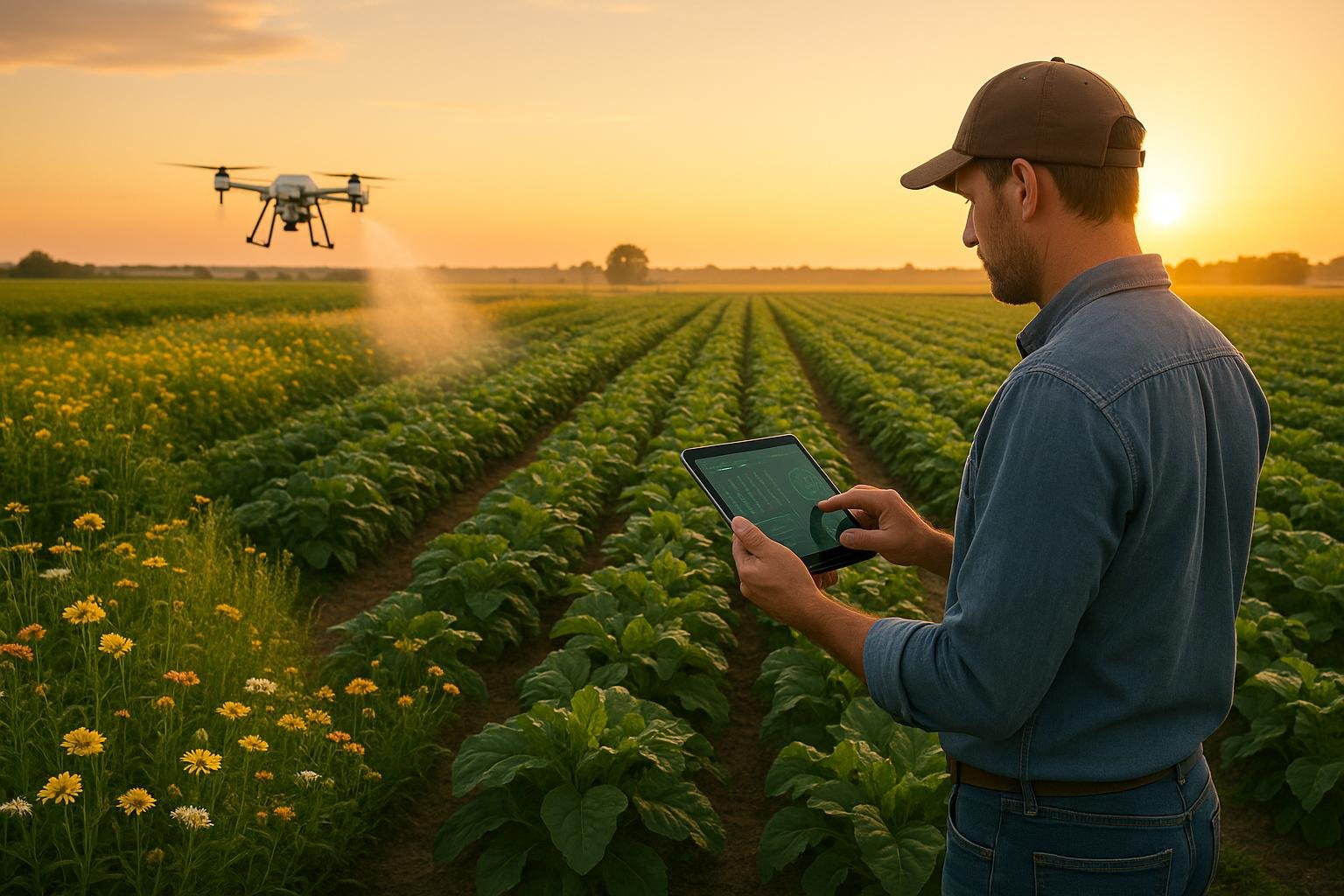
AI is changing pest control by combining biological and chemical methods for better results. Here's why this matters:
- Current Issues: Over 90% of pesticides are wasted, pests are becoming resistant, and crop losses cost $220 billion yearly. Current methods harm ecosystems and lack precision.
- AI's Role: AI uses data from drones, sensors, and weather patterns to detect pests early and predict outbreaks. It helps reduce pesticide use by up to 90% and improves crop yields by over 10%.
- Examples in Action: Tools like Trapview monitor pests with AI-powered traps, while smart sprayers such as John Deere's "See & Spray" target weeds precisely. AI apps like those from TNAU detect infestations with over 93% accuracy.
- Impact: U.S. farmers are cutting pesticide use by 25%, saving water, and boosting efficiency. AI also supports small-scale users with tools like AIGardenPlanner for eco-friendly gardening.
While initial costs and technical barriers exist, AI-driven pest control offers precise, efficient solutions that reduce waste and protect crops.
Drone Series 2024: Next-Generation Pest Management Tools

AI for Pest Detection and Monitoring
Effective pest control starts with early detection and consistent monitoring. AI-powered systems are transforming this process by offering real-time insights that traditional methods simply can't match. By combining advanced sensors, machine learning, and data analytics, these technologies create networks capable of identifying pest threats before they become serious issues. Let’s dive into how AI sensors and machine learning are reshaping pest detection and monitoring.
AI Sensors and IoT in Pest Detection
IoT systems equipped with sensors and traps are being deployed across properties to collect data on factors like temperature, humidity, movement, and other environmental conditions that influence pest behavior [6]. When paired with AI algorithms, these sensors can automatically identify pests and pinpoint their locations with impressive accuracy.
The technology leverages tools like infrared sensors, motion detectors, and video surveillance to operate continuously. These devices capture data - such as heat, movement, and sound - which machine learning algorithms then analyze using extensive datasets to recommend targeted treatment strategies [3].
Take Rentokil's PestConnect system as an example. It uses infrared sensors to monitor customer sites around the clock, sending real-time alerts to field technicians for immediate action [6]. It also generates detailed reports with recommendations and trends [3]. Anticimex's SMART Digital Rodent Control System is another standout, employing digital traps and sensors to track rodent activity and predict population trends in nearby areas [3]. Meanwhile, FarmSense gathers insect and environmental data directly from the field, uploads it to the cloud, and uses AI to provide tailored recommendations based on specific crops, weather, and terrain [3]. When pests are detected, these systems can automatically activate traps or notify technicians for rapid intervention [6].
Predicting Pest Outbreaks with Machine Learning
Beyond detection, machine learning transforms raw sensor data into powerful tools for forecasting pest outbreaks. By analyzing large datasets, machine learning shifts pest control from reactive to proactive, predicting issues before they arise. These predictive models account for factors like pest life cycles, environmental conditions, weather patterns, and historical data to offer early warnings and enable preventative measures [9].
Traditional methods often rely on manual monitoring and historical data, which can lead to slower responses. Machine learning, on the other hand, enables real-time detection and precise interventions, improving crop protection while reducing environmental impact [9].
The real strength of machine learning lies in its ability to uncover complex patterns that conventional approaches might miss. Unlike static, rule-based systems, machine learning adapts and evolves as it processes more data [8]. For instance, FarmERP uses AI, machine learning, and big data to provide real-time insights into pest threats, helping farmers act before problems worsen [9]. Additionally, AI optimizes pest control methods to minimize hazards and costs, addressing the staggering global crop losses - estimated at 20–40% annually - valued at over $220 billion [9].
Performance Gains Over Standard Methods
The predictive capabilities of AI not only anticipate outbreaks but also deliver measurable improvements in efficiency and accuracy. AI-driven pest detection systems boast up to 95% accuracy and can scan as much as 100 acres per hour, far outpacing traditional techniques [7]. Some IoT-based systems even achieve detection accuracy rates as high as 99.65% [5].
Studies consistently highlight these advancements. For example, AI-powered cameras and microphone sensors on cotton farms achieved detection accuracies between 70% and 98%, thanks to deep learning algorithms [9]. Similarly, a YOLOv5-based system reached a mean Average Precision (mAP) of 99.5% for detecting pests in soybean crops [10]. Another study saw a YOLOv5 model achieve a 93% mAP on a custom dataset, while Liu et al.’s PestNet framework delivered a 75.46% mAP for multi-class pest detection using a dataset of 80,000 labeled images [10].
For predictive tasks, one study achieved an 86.3% accuracy rate for insect detection over five-day periods by incorporating weather data [10]. The ARIMAX model also proved effective, forecasting greenhouse whitefly populations with a Root Mean Square Error (RMSE) of about 1.30 for 7-day predictions [10].
These advancements translate into real-world benefits. Technicians can address infestations early, often reducing the need for widespread pesticide use [3]. Targeted pest control based on predictive insights ensures more precise treatments, further limiting chemical applications [3]. These cutting-edge detection methods lay the groundwork for integrating biological and chemical pest control with unmatched precision.
AI-Driven Integration of Biological and Chemical Controls
AI isn't just a tool for pest detection and monitoring - it’s also revolutionizing how biological and chemical controls work together. By combining these methods, AI creates a tailored, efficient approach to pest management that reduces environmental harm while maintaining effectiveness. Instead of relying on one-size-fits-all solutions, AI sifts through complex data to recommend the best mix of treatments for each unique situation.
Balancing Biological and Chemical Methods
One of AI’s strengths lies in its ability to analyze massive amounts of environmental data to find the right balance between biological agents and chemical treatments. It evaluates factors like crop health, pest behavior, and local conditions to minimize pesticide use while still achieving strong results [1].
Traditional pest control often defaults to chemical solutions, but AI changes the game. It identifies when biological methods, like introducing natural predators, can do the job and when chemical interventions are truly necessary. This smarter approach is making a difference. For example, pilot programs worldwide have shown that using biological methods guided by AI can cut chemical pesticide use by up to 40% [2].
The inefficiency of traditional spraying methods also comes into focus here. Studies show that only 20–30% of sprayed pesticides actually reach their target, with the rest lost to runoff, evaporation, and other factors [11]. AI’s precision ensures that treatments are applied where they’re needed most, reducing waste and environmental damage.
Precision Application with AI
When it comes to chemical applications, AI takes precision to a whole new level. AI-powered sprayers with computer vision technology, like John Deere’s "See & Spray" system, can distinguish crops from weeds in real time. This allows herbicides to be applied only where necessary, cutting herbicide use by up to 90% while also improving crop yields [12].
AI doesn’t stop there. It integrates real-time weather data, pest life cycles, crop growth stages, and historical outbreak patterns to determine the best timing for treatments [11]. By targeting pests during their most vulnerable stages, these systems enhance effectiveness and further reduce the need for chemicals.
Examples of AI-Integrated Strategies
AI’s capabilities go beyond precision spraying. In vineyards, smart monitoring systems equipped with cameras, sensors, and AI are making pest control more effective. A study by Teixeira et al. found that using segmentation during pheromone trap image analysis improved grape moth detection rates by 3% for YOLOv5 and 1.2% for YOLOv8 [1].
Another innovative solution uses drones equipped with edge intelligence. These drones can identify pests like Tessaratoma papillosa in real time using a Tiny-YOLOv3 neural network. Once identified, the system calculates efficient pesticide spraying routes, reducing pesticide use and environmental damage while boosting yields [1].
Companies like Semios are also leading the charge. By employing AI to combat moth populations, Semios increased almond production significantly, eliminating 1.5 billion moths [3]. Similarly, Bayer’s Xarvio platform has helped farmers reduce fungicide and pesticide use by 15–25% while maintaining or improving yields [12]. Climate Corporation’s Climate FieldView has enabled farmers to achieve yield increases of 5–10% while cutting input costs by as much as 15% [12].
Even home gardeners can benefit from these advancements. Tools like AIGardenPlanner (https://aigardenplanner.com) help users create gardens that naturally attract beneficial insects, offering guidance on targeted interventions. These tools make it easier to design landscapes that work in harmony with nature, showcasing the potential of AI-driven pest management for everyone, from large-scale farmers to backyard enthusiasts.
sbb-itb-4d6a8dd
🚀 Ready to Reinvent Your Garden?
Join thousands of homeowners who have transformed their gardens using our AI design tool. Upload one photo to explore endless possibilities.
Get your AI garden designs →Comparison: Standard vs. AI-Integrated Pest Management
Traditional pest control methods have been a cornerstone of agriculture for decades. However, AI-integrated systems are reshaping the field, offering new levels of efficiency, precision, and reduced environmental impact. Comparing these approaches highlights trade-offs in cost, labor, and outcomes.
Pros and Cons of Each Approach
The differences between the two methods become clear when you look at how they operate. Traditional pest management relies on scheduled pesticide use and reactive measures once pests are detected. On the other hand, AI-integrated systems employ predictive analytics for early detection and proactive solutions[13].
Here’s a quick breakdown of how these approaches stack up:
| Aspect | Standard Pest Control | AI-Integrated Pest Management |
|---|---|---|
| Detection Method | Visual inspection, scheduled monitoring | Automated sensors, cameras, IoT devices |
| Response Time | Reactive (after pests appear) | Proactive (predictive threat identification) |
| Pesticide Usage | Broad-spectrum, scheduled applications | Precision targeting (up to 90% reduction) |
| Labor Requirements | High (frequent manual inspections) | Lower (automation reduces workload) |
| Cost Structure | Lower upfront, higher ongoing expenses | Higher upfront, lower long-term costs |
| Environmental Impact | More chemical runoff and residues | Reduced chemical use, less environmental harm |
| Accuracy | Prone to human error | High precision (93–98% in some cases) |
The advantages of AI systems are evident in real-world applications. Take Blue River Technology, for example. Their smart sprayer uses image recognition to differentiate crops from weeds, cutting herbicide use by up to 90% compared to traditional methods[3]. This level of precision is hard to achieve with conventional tools.
Another example is Semios, which partnered with Google to use AI for pest prediction and prevention. This system not only increased almond yields but also protected beneficial insects, something traditional methods struggle to accomplish without blanket chemical spraying[3].
Digital systems like Anticimex’s traps offer continuous monitoring of rodent activity, building trend data to predict future infestations. In contrast, standard methods rely on periodic inspections, which can miss critical signs of pest activity[3].
Challenges of AI-Integrated Systems
Despite their benefits, AI systems come with hurdles. The initial investment can be steep, making them less accessible for smaller farms or operations. Traditional methods, while less precise, are more affordable upfront and don’t require specialized training or infrastructure.
Another challenge is the learning curve. Many agricultural workers are already familiar with traditional practices, while AI systems often demand technical training and ongoing support. Companies like Rentokil are addressing this through user-friendly platforms like PestConnect, which offers real-time monitoring and reporting[3].
FarmSense provides a glimpse into how AI simplifies data collection. Its sensors gather field data on insects and environmental conditions, process it in the cloud, and generate actionable recommendations. Compare this to traditional methods, which rely on manual data collection and analysis - a process that’s both slow and prone to errors[3].
Scalability and Environmental Benefits
AI systems also excel in scalability. Solinftec’s Solix Ag Robotics can manage large areas efficiently, using precision sprays for early-stage weeds and light-based systems for insect control. These tools can often outperform multiple technicians in both coverage and accuracy[3].
Environmental benefits are another major advantage. Traditional pest control often results in chemical waste, with pesticides failing to reach their targets and contributing to pollution. AI-driven precision applications drastically reduce waste by delivering treatments exactly where they’re needed.
For smaller-scale users like home gardeners, tools like AIGardenPlanner help integrate these principles by designing gardens that attract beneficial insects while offering targeted pest control advice. This makes AI-informed pest management accessible beyond large-scale farming.
As Dylan Henryson from FieldRoutes puts it:
"AI is poised to transform pest control on all fronts. It automates tasks, so owners and field technicians have more time to focus on strategic growth. It improves customer experience through better communication and more effective service. Those results lead to increased revenue through more new appointments and repeat business." [3]
Ultimately, the choice between traditional and AI-integrated pest management depends on factors like scale, budget, and long-term goals. While traditional methods offer a low-cost entry point, AI systems deliver greater accuracy, reduced chemical use, and significant environmental benefits over time. This comparison underscores the growing potential of AI to revolutionize pest management strategies.
Challenges and Future Directions in AI-Powered Pest Control
AI-powered pest control has shown impressive accuracy and efficiency, but its adoption in U.S. agriculture and landscaping faces a number of hurdles. Examining these challenges and the latest research efforts sheds light on the future of this technology.
Barriers to Adoption
Despite its potential, AI adoption in pest control is far from widespread. High costs and limited technical knowledge are major roadblocks. In fact, 52% of North American farmers cite cost as a barrier, while 38% point to a lack of technical expertise [15][16]. On top of that, 40% are hesitant due to unclear returns on investment [15].
The demographics of American farmers also play a role. With an average age of 58 and a preference for long-standing practices, many find AI's learning curve daunting. According to McKinsey's 2024 Global Farmer Insights report, there’s been only a modest 3% increase since 2022 in farmers adopting or showing interest in digital tools [15].
Infrastructure issues add another layer of complexity. While 85% of U.S. farms have internet access, only about half boast broadband connections [15]. This connectivity gap makes it challenging to use AI systems that rely on real-time data and cloud-based analytics.
Past experiences with technology have also left some farmers wary. Failed implementations have led to frustration, fueling skepticism about newer AI solutions [17]. Privacy and security concerns regarding data integration further complicate matters. Additionally, integrating AI with existing equipment often requires significant adjustments to workflows [14].
For smaller farms and home gardeners, these challenges can feel even more overwhelming. The upfront investment for AI systems is often out of reach for residential users. However, tools like AIGardenPlanner are working to bridge this gap by offering accessible, user-friendly platforms that simplify AI-powered pest management.
Current Research and New Developments
To tackle these barriers, researchers are developing advanced solutions aimed at making AI more practical and effective. For instance, Zhou et al. demonstrated the power of precision detection using YOLOv4 and Faster R-CNN models to identify two-spotted spider mites and their predators on strawberries with an impressive 93% accuracy [11].
Emerging technologies like hyperspectral imaging and edge computing are enabling early pest detection and real-time decision-making without relying on constant internet access [11]. Edge AI devices, which process data locally, are becoming more advanced, offering valuable insights to farmers even in areas with limited broadband [20].
Federated learning is another promising development. This approach allows multiple users to train AI models collaboratively without exposing sensitive data [11]. Meanwhile, the integration of AI with robotics is evolving rapidly. Some systems now go beyond detection, automating responses. For example, in cotton farms, AI-powered cameras and sensors have achieved insect detection rates between 70% and 98% [9].
In California vineyards, drones equipped with AI imaging technology are scanning large areas to spot early signs of pest infestations. These systems enable precise, localized treatments, cutting pesticide use by up to 30% [19]. Crowdsourced data models are also gaining traction, pooling information from various sources to improve AI algorithms. Examples include Brazilian coffee farmers using AI to catch leaf rust early and Indian agritech startups leveraging drones and AI to monitor pest outbreaks in rice and cotton fields, reducing pesticide use by over 30% [20].
Long-Term Impacts
The potential long-term benefits of AI in pest control are substantial. AI-driven precision farming could boost crop yields by up to 20% and cut water usage by as much as 30% by 2025 [18]. Considering that pests and diseases currently cause 20–40% of global crop losses - costing over $220 billion annually - the economic impact of these improvements could be enormous [9].
Environmental benefits are also significant. Only 20–30% of sprayed pesticides actually hit their target, with the rest lost to the environment [11]. AI-powered Integrated Pest Management (IPM) could reduce pesticide use by up to 50%, promoting more sustainable practices for the majority of global crops [21].
Improved pest control has critical implications for U.S. food security as well. With a growing population and increasing climate challenges, protecting crops efficiently while conserving resources is becoming more important than ever [9]. Additionally, AI can help farmers meet regulatory standards by offering data-driven insights for compliance, while also reducing costs through early detection, precision application, and lower labor demands [14].
Collaboration between agribusinesses and research institutions will play a key role in making AI tools more accessible. Developing affordable solutions, offering comprehensive training programs, and ensuring small-scale farmers are included will be essential. With field farming already accounting for 61.5% of AI adoption in agriculture, there’s a solid base for expanding these technologies into integrated pest control strategies [15].
To truly transform pest management, AI systems need to become more affordable, user-friendly, and clearly valuable to farmers of all sizes. Overcoming these challenges will be critical to moving from experimental research to widespread application.
Conclusion
Exploring AI's role in blending biological and chemical pest control methods reveals a transformative shift in how pest management is approached. By combining these strategies, AI-powered systems are delivering more efficient, sustainable, and cost-effective solutions for farmers and gardeners across the United States.
Key Takeaways
AI is reshaping pest management by offering precision and proactive solutions that traditional methods often lack. For example, AI-driven sprayers have shown the ability to cut herbicide use by over 90% during trials. These systems identify crops and weeds with remarkable accuracy, targeting only the problem areas and addressing inefficiencies in conventional practices [11].
The "4R pest management" framework - focusing on the Right identification, method, timing, and action - becomes achievable thanks to AI's advanced analytics [11]. Commercial platforms are already utilizing tools like trap counts, local weather data, and historical trends to predict pest infestation peaks with over 80% accuracy [11]. Research from 430 rice fields in China highlights the importance of timely interventions, showing that even a 15–20% delay in pest control can lead to widespread increases in pesticide use [11]. AI helps farmers act at the most effective times, targeting pests during their weakest stages.
These systems also enhance resource efficiency and reduce environmental harm, promoting sustainable farming practices that safeguard biodiversity. For home gardeners and landscapers, tools like AIGardenPlanner make these advanced pest control strategies accessible through easy-to-use platforms that don’t require technical expertise. This progress points to a future where smarter, integrated pest management is within reach for everyone.
Final Thoughts on AI's Role in Pest Control
As AI technology becomes more affordable and widely available, its impact on pest control will only grow. Industry experts have long recognized the constant battle between new pest threats and the development of control techniques. Aldo Leopold’s observation captures this dynamic perfectly:
"Agricultural science is largely a race between the emergence of new pests and the emergence of new techniques for their control." – Aldo Leopold [4]
Today, AI is shifting this narrative. Instead of merely reacting to pest problems, farmers and gardeners can anticipate and address issues with precision and minimal environmental impact.
By integrating biological and chemical controls, AI not only pushes the boundaries of technology but also supports sustainable agriculture. This ensures that we can meet the demands of a growing population while preserving natural ecosystems. As these tools become more user-friendly, they will empower everyone - from large-scale farmers to backyard gardeners - to adopt advanced pest management strategies.
The future of pest control lies in utilizing AI to harmonize biological and chemical methods. This approach promises healthier crops, reduced ecological damage, and more profitable farming practices - delivering benefits to producers, consumers, and the environment alike.
FAQs
How does AI help reduce the use of chemical pesticides in pest control?
AI is transforming pest control by reducing the need for chemical pesticides through early detection and targeted treatments. With tools like advanced sensors, drones, and predictive analytics, AI can spot pest infestations early and pinpoint the exact areas that require attention. This approach cuts down on unnecessary spraying and lowers the total amount of chemicals used.
Beyond that, AI combines biological methods - like introducing natural predators - with chemical solutions for a smarter pest management strategy. By fine-tuning this balance, AI not only ensures effective control but also supports eco-friendly practices and limits harm to the environment.
What challenges do small-scale farmers and home gardeners face when adopting AI-driven pest control systems?
Small-scale farmers and home gardeners often encounter hurdles when trying to use AI-driven pest control systems. One of the biggest challenges is the high initial cost, which can be a tough pill to swallow for those working with tight budgets. On top of that, many lack access to reliable data or the infrastructure needed to make these systems work effectively.
Another issue is technological resistance - some users may feel uneasy about trusting AI tools or simply find them too complex to navigate. For small operations or individuals with limited resources and little experience in advanced tech, these barriers can feel even more daunting.
How can AI-powered pest control systems help protect the environment compared to traditional methods?
AI-powered pest control systems are transforming how we manage pests while being kinder to the environment. By enabling precise pesticide application, these systems cut down on the amount of chemicals used, focusing treatments only where they're actually needed. This not only reduces chemical waste but also helps protect nearby ecosystems from unnecessary exposure.
On top of that, AI enhances pest forecasting and early detection, allowing for more targeted and efficient responses. Instead of relying on broad-spectrum pesticides, this method focuses on specific issues, which helps preserve biodiversity, lowers pollution levels, and promotes healthier ecosystems - all while keeping pest populations in check.
🎨 Visualize Your Dream Garden Today!
Transform any outdoor space into a professional landscape design in minutes. Just upload a photo, choose your style, and let our AI do the rest.
Start your garden transformation now →Related posts
Related Articles
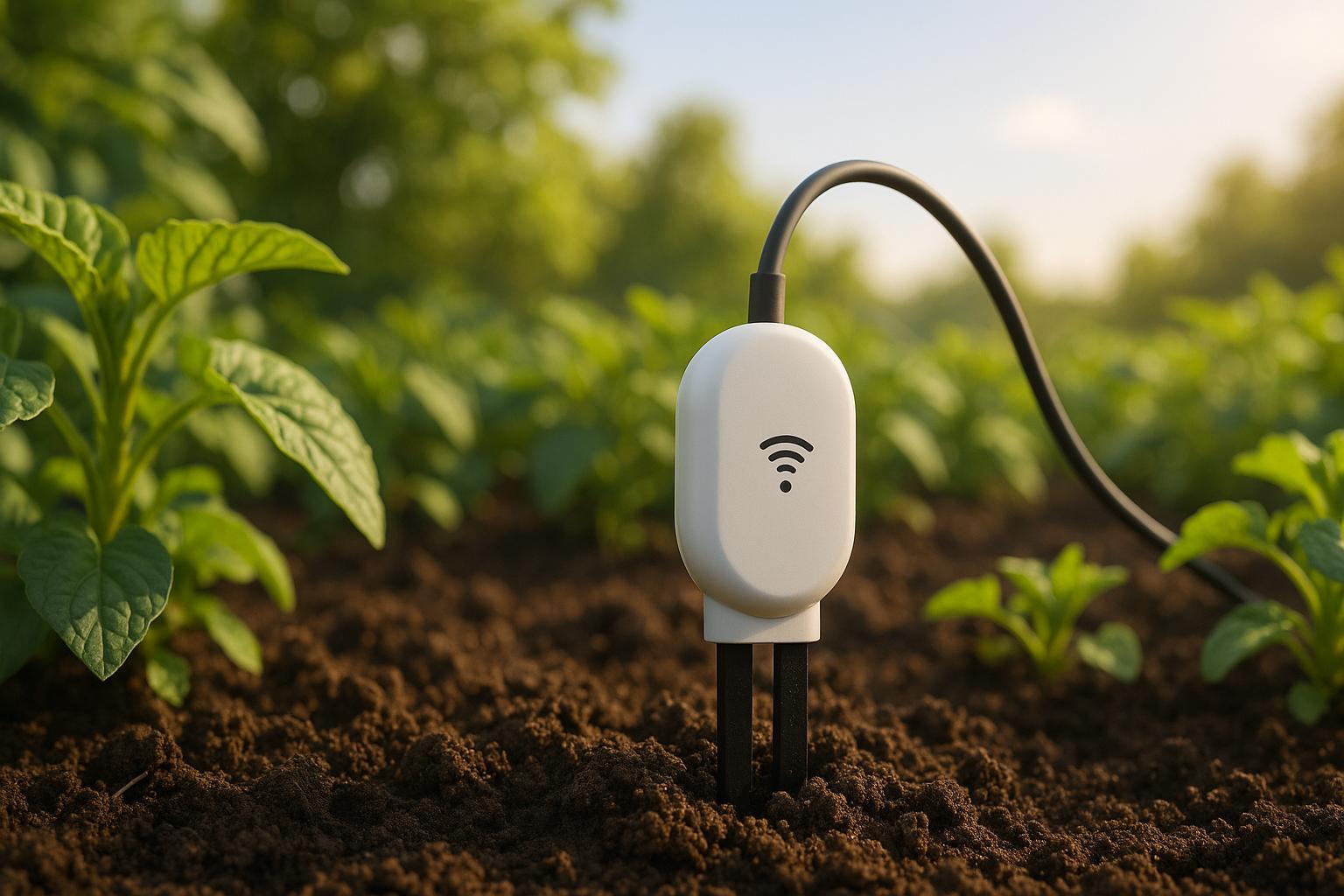
How Soil Sensors Work with Cloud Irrigation
Explore how soil sensors and cloud irrigation systems optimize water usage, enhance plant health, and simplify garden management.
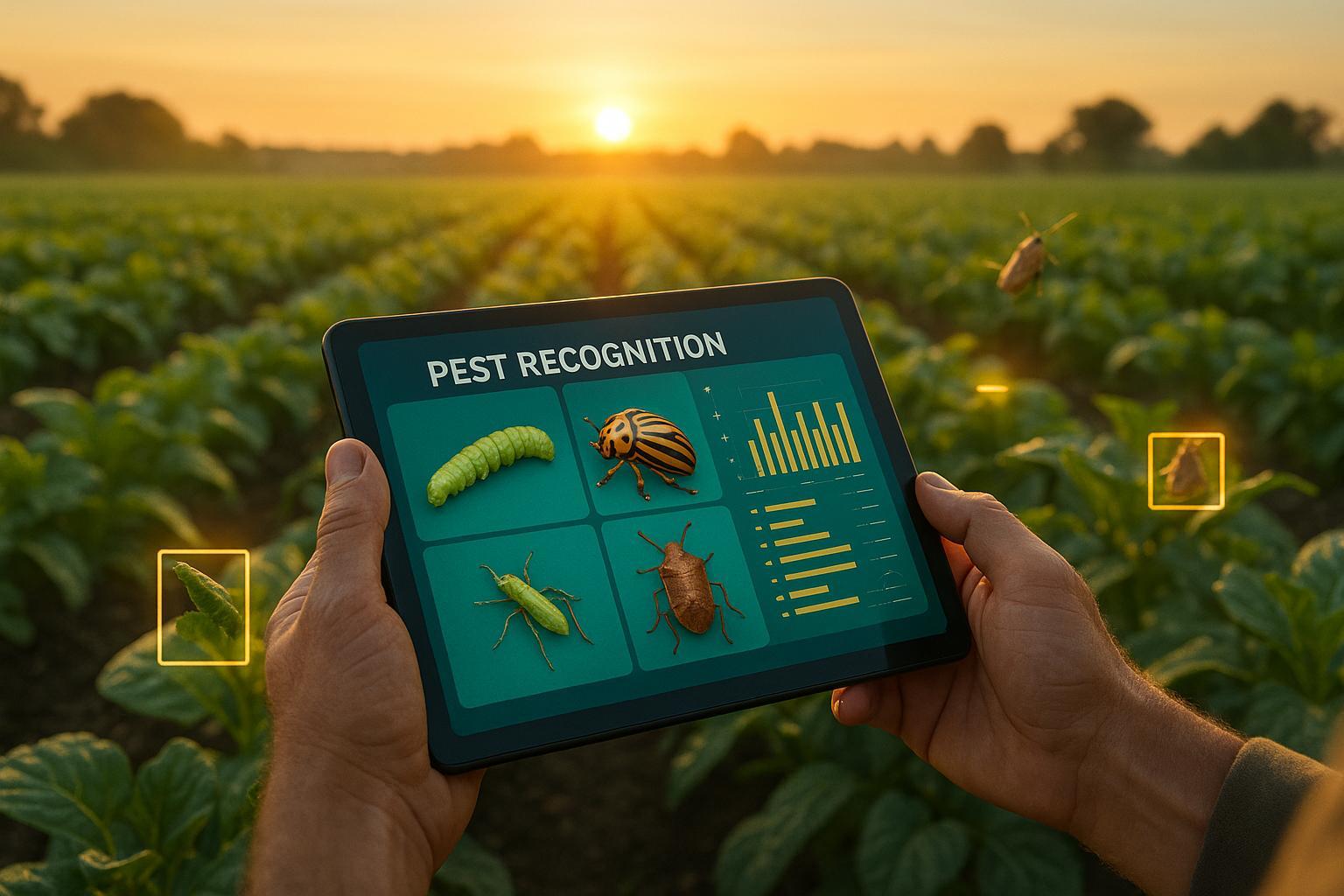
AI Datasets for Pest Recognition: Explained
Explore how AI datasets enhance pest recognition in agriculture, tackling challenges and leveraging synthetic data for improved crop management.
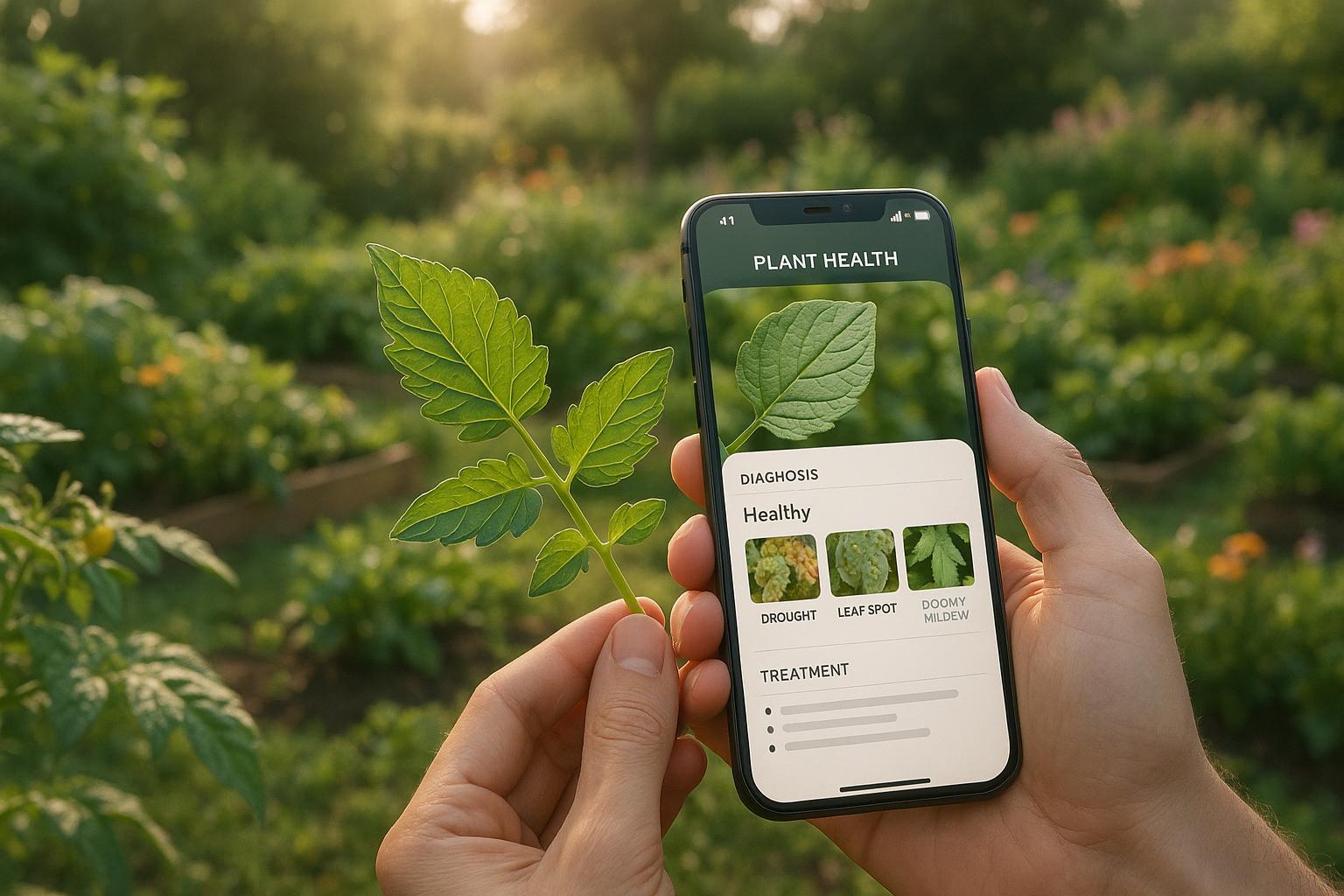
How AI Apps Predict Garden Diseases
AI gardening apps revolutionize plant care by enabling early disease detection, customized treatments, and proactive prevention strategies.
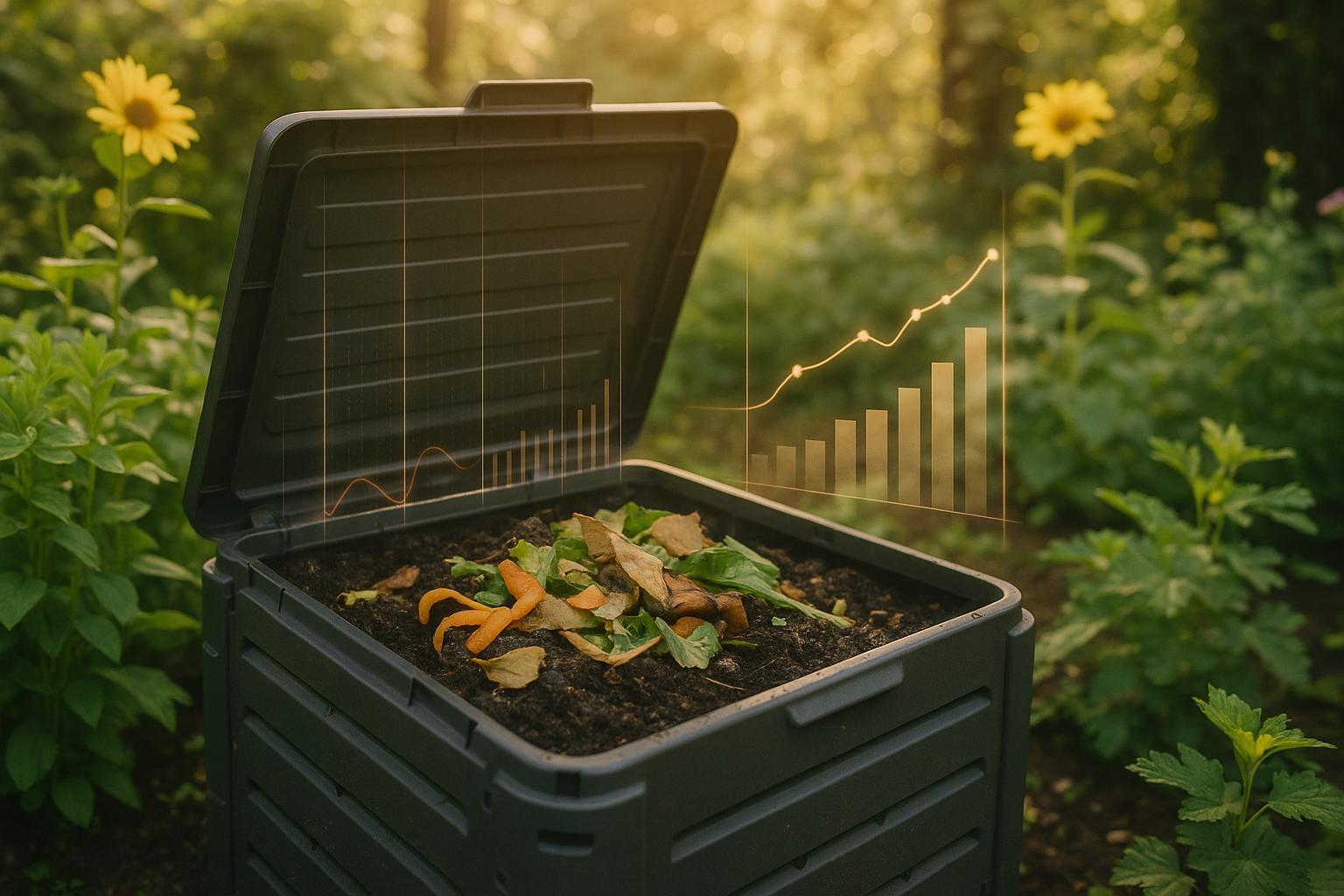
AI Models for Compost Decomposition Rates
Explore how AI models are revolutionizing composting by enhancing efficiency, reducing costs, and improving compost quality through real-time monitoring and predictions.
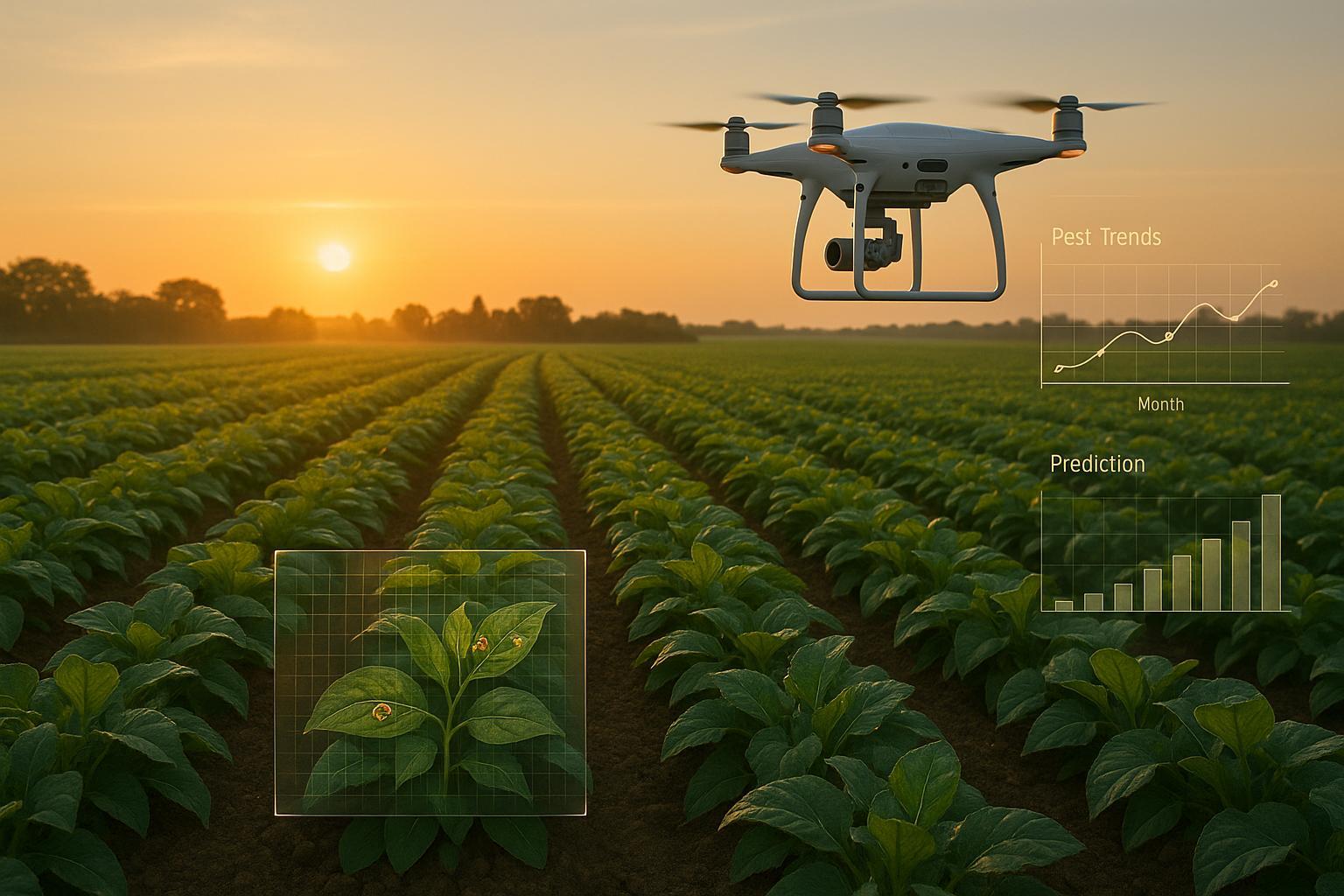
How AI Maps Pest Trends for Better Control
Explore how AI is revolutionizing pest control with accurate predictions, eco-friendly practices, and smarter pest management strategies.

Best Time to Plant Cabbage in Mississippi: A Comprehensive Guide
Discover the optimal timing and essential factors for planting cabbage in Mississippi to ensure a successful harvest. Explore climate considerations, soil quality, and planting processes.